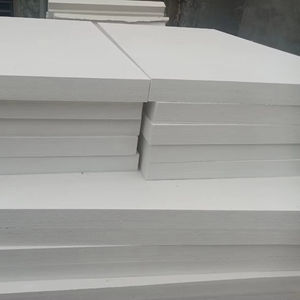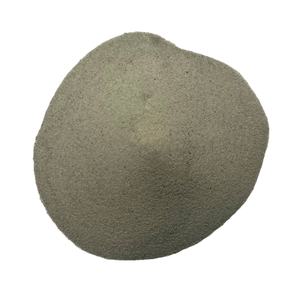Discover Premium Ceramic Products | Durability & Elegance United | Advanced Ceramics
1. Introduction
In the past 48 hours, a major foundry in Ohio reported a 30% increase in crucible failures during high-temperature aluminum melting—traced back to improper preheating of silicon carbide crucibles. This incident highlights a widespread but avoidable issue in metal casting and lab applications. If you’re using a silicon carbide crucible, knowing how to handle it correctly isn’t just about efficiency—it’s critical for safety and cost savings.

Silicon carbide crucibles are prized for their exceptional thermal conductivity, resistance to thermal shock, and ability to withstand temperatures above 1600°C. But even the toughest silicon carbide ceramic can fail if misused. This guide walks you through practical steps to use and maintain your crucible properly, troubleshoot common problems, and understand how it compares to alternatives like silicon nitride or boron carbide.
2. Understanding Your Silicon Carbide Crucible
A silicon carbide crucible is made from high-purity silicon carbide, often reinforced with binders or sintered into dense ceramic forms like RBSiC (reaction-bonded silicon carbide). Unlike standard clay-graphite crucibles, silicon carbide offers superior oxidation resistance and mechanical strength at high temperatures.
You’ll also encounter related products like silicon carbide ceramic tiles, silicon carbide ceramic columns, and silicon carbide ring components—often used in kilns or industrial furnaces. While these share material properties, crucibles demand special handling due to direct contact with molten materials.
3. Step-by-Step: How to Safely Use a Silicon Carbide Crucible
3.1. Preheating Is Non-Negotiable
Always preheat your silicon carbide crucible slowly before introducing molten metal or high-heat processes. Rapid heating causes uneven expansion, leading to cracks.

- Start at 150–200°C for 30 minutes.
- Gradually increase to 600°C over 1–2 hours.
- Only then ramp up to your target operating temperature.
Skipping this step is the #1 cause of premature failure.
3.2. Avoid Direct Flame Impingement
Direct contact with burner flames—especially from silicon carbide burner nozzles—can create hot spots. Position the crucible so heat is distributed evenly. If using a silicon carbide brick-lined furnace, ensure consistent airflow and insulation.
3.3. Never Quench a Hot Crucible
Dunking a red-hot silicon carbide crucible into water or cold surfaces guarantees thermal shock. Always allow it to cool naturally in a dry, draft-free area.

4. Common Problems and Solutions
4.1. Cracking or Spalling
Cause: Thermal shock or mechanical impact. Solution: Follow proper preheating protocols and handle with ceramic-safe tongs—not metal tools that can chip the surface.
4.2. Glaze Formation or Slag Buildup
Molten metals or fluxes can react with the crucible surface over time. Clean gently with a soft brush after cooling. Avoid abrasive silicon carbide grinding discs on the interior—they compromise structural integrity.
4.3. Oxidation at High Temperatures
While silicon carbide resists oxidation better than most ceramics, prolonged exposure above 1400°C in air can degrade it. Consider using a protective atmosphere (e.g., argon) or switching to a silicon nitride crucible factory-made alternative for ultra-high-purity applications.
5. Silicon Carbide vs. Alternatives: When to Choose What
Boron carbide vs silicon carbide? Boron carbide is harder but more expensive and less thermally conductive—better for armor, not crucibles. For extreme thermal cycling, custom silicon nitride heat shields or silicon nitride ceramic components (like silicon nitride ring or silicon nitride plate) may outperform silicon carbide in specific lab settings.
However, for general foundry, jewelry casting, or glass melting, silicon carbide remains the go-to. Its versatility extends beyond crucibles—think silicon carbide ceramic baking dish, silicon carbide ceramic dinner plates, or even silicon carbide ceramic serving bowls for high-heat culinary use (though food-grade certification is essential).
6. Maintenance and Storage Tips
After use, let the crucible cool completely. Store it upright in a dry cabinet—never stack heavy items on top. Inspect regularly for hairline cracks. If you notice pitting or thinning walls, retire it before catastrophic failure.
For industrial setups using silicon carbide ceramic tubes, silicon carbide thermocouple protection tubes, or silicon carbide porous ceramic tube systems, apply the same principles: gradual heating, no thermal shock, and routine inspection.
7. Conclusion
A silicon carbide crucible is a powerful tool—but only if treated with respect for its material limits. By preheating properly, avoiding thermal shock, and understanding when alternatives like silicon nitride might be better suited, you’ll extend its life and ensure consistent performance. Whether you’re melting metal, firing ceramics, or exploring high-temp lab work, these practical steps keep your process safe, efficient, and cost-effective.
Our Website founded on October 17, 2012, is a high-tech enterprise committed to the research and development, production, processing, sales and technical services of ceramic relative materials such as How. Our products includes but not limited to Boron Carbide Ceramic Products, Boron Nitride Ceramic Products, Silicon Carbide Ceramic Products, Silicon Nitride Ceramic Products, Zirconium Dioxide Ceramic Products, etc. If you are interested, please feel free to contact us.
